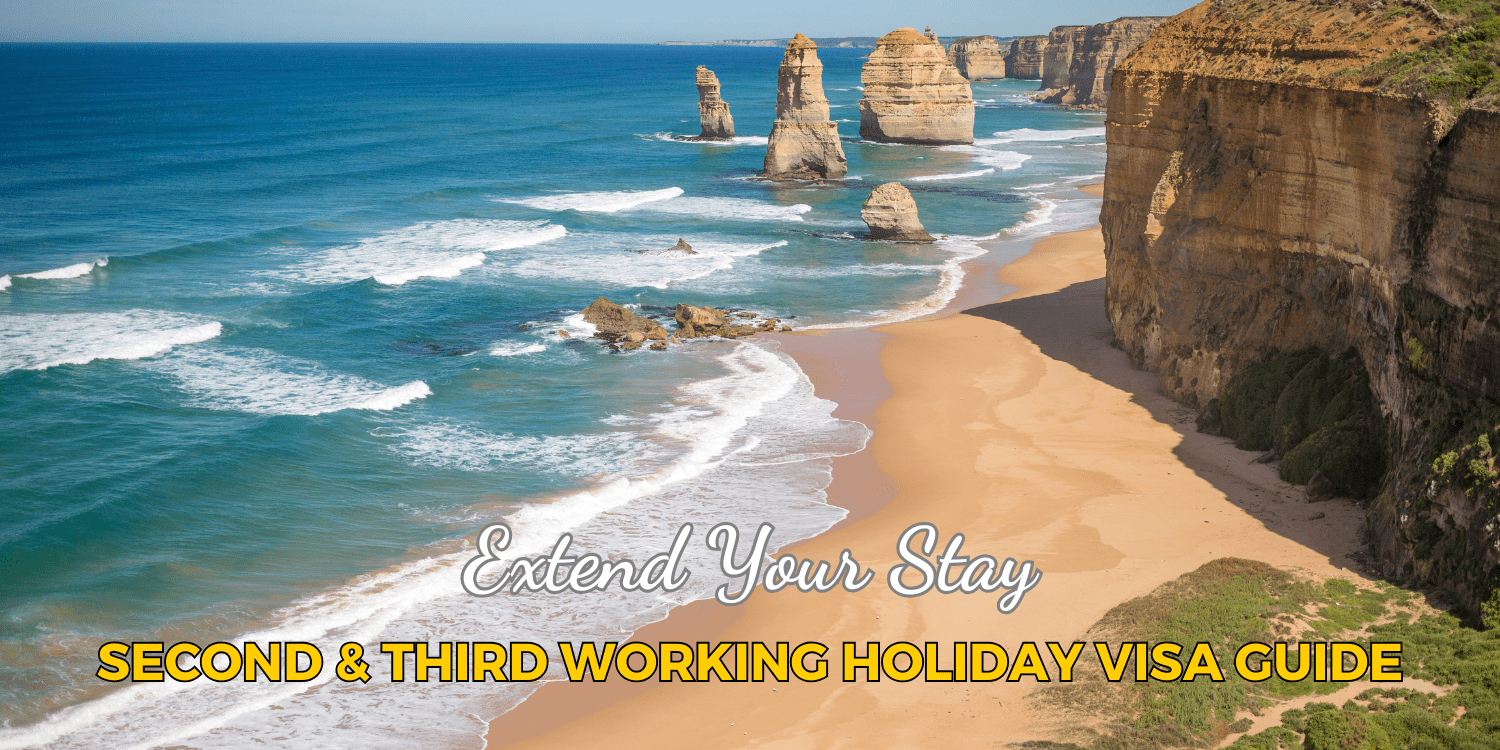Introduction
For many young travellers, one year in Australia simply isn’t enough. The Working Holiday Visa (subclass 417) and Work and Holiday Visa (subclass 462) give you the chance to explore Australia, gain valuable work experience and fund your travels. Even better if you meet the requirements, you may be able to stay for up to three years.
Below, we will explain the key differences between the visas, how to qualify for the second and third visa, and what types of work meet the “specified work” requirement.
417 vs 462: What’s the Difference?
Both the 417 and 462 visas allow eligible applicants aged 18–30 (or 18–35 for some nationalities) to work and travel in Australia. The main differences are:
-
Subclass 417: Common for applicants from the UK, Canada and many European countries.
-
Subclass 462: Covers a different list of countries and usually requires additional evidence such as education level or English proficiency.
Despite these differences, both visas offer similar work rights, travel opportunities and the ability to apply for a second and third year.
Applying for Your Second Working Holiday or Work and Holiday Visa
To qualify for the second-year visa, you must complete enough specified work during your first visa. This involves working in eligible jobs located in approved regional areas.
Key requirements:
-
Complete at least 3 months (88 days) of eligible paid work.
-
Perform the work while holding your first 417 or 462 visa.
-
Meet Australian workplace standards (unpaid or volunteer work does not count).
Examples of Eligible Specified Work
Common types of qualifying work include:
-
Fruit or vegetable harvesting and packing
-
Farm work or cattle station work
-
Construction in regional areas
-
Fishing and pearling
-
Mining and forestry
-
Tourism and hospitality in northern or remote regions
-
Bushfire, flood and disaster recovery work
When lodging your application, you must provide evidence such as payslips, tax summaries, employer contact details, and proof the work was completed in an eligible postcode.
Understanding the Six-Month Work Limitation
Under both visa subclasses, you generally cannot work for the same employer for more than six months. However, several exemptions allow you to stay with one employer for longer.
You may exceed the six-month limit if:
-
You work in different locations for the same employer and do not stay in one location for over six months.
-
You are employed in critical sectors such as agriculture, food processing, tourism in northern Australia, health, aged care or disability services.
-
Your employer operates across multiple sites and you transfer between branches.
-
You receive written permission from the Department of Home Affairs.
These exemptions help travellers complete their specified work without frequently changing employers.
Applying for Your Third Working Holiday or Work and Holiday Visa
If you’ve enjoyed your second year and want to stay even longer, you may qualify for the third-year visa.
To be eligible, you must:
-
Currently hold or have previously held a second 417 or 462 visa.
-
Complete at least six months of specified work during your second-year visa.
-
Meet health, age and character requirements.
As with the previous visa applications, you must submit detailed evidence of your employment, including payslips, references and proof that the work occurred in an eligible regional area.
The third-year visa gives you another 12 months to live, work and explore Australia—perfect for travellers who want to build savings, gain more experience or continue regional work.
Practical Tips for a Smooth Visa Application
-
Plan your specified work early—seasonal jobs fill quickly and weather conditions can affect availability.
-
Keep all documents—save digital copies of contracts, payslips, rosters and superannuation details.
-
Check postcode eligibility before you start any job.
-
Only paid work counts—ensure your employer follows Australian workplace laws.
-
Apply before your visa expires if lodging from within Australia.
Final Thoughts
-
The Working Holiday and Work and Holiday programs offer an incredible opportunity to discover Australia while earning money and developing new skills. With the option to extend your stay for a second or even third year, your Australian adventure doesn’t have to end after just 12 months.
By understanding the specified work requirements, six-month rule exemptions and application timelines, you can maximise your chances of a successful visa extension.
If you need personalised advice or help preparing your application, SOL Edu & Migration is here to support you every step of the way.

